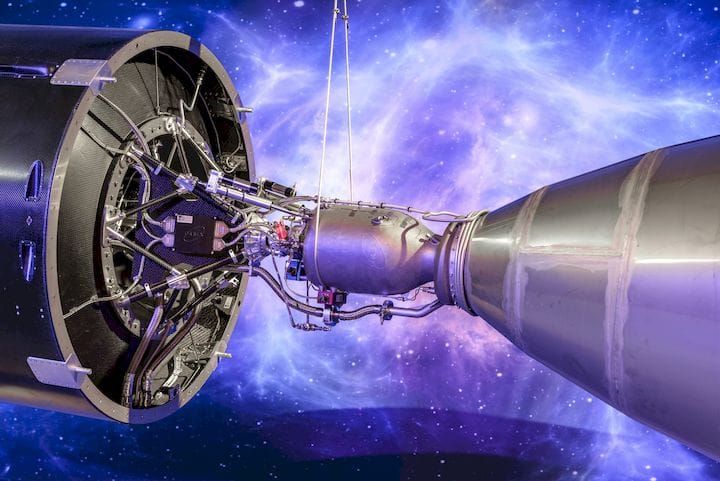![The Prime 3D printed rocket engine [Source: Orbex]](https://fabbaloo.com/wp-content/uploads/2020/05/Orbex-Space-Forres-070219-307-Full-Size_result_img_5eb09cd435b08.jpg)
Orbex revealed their new 3D printed rocket engine.
The UK-based startup is one of several worldwide companies seeking to address the “small satellite” market, while leaving the flashier — and much larger — payloads to companies like ArianeSpace, SpaceX and ULA.
It’s a burgeoning market, as technology has allowed satellites to shrink to tiny sizes relative to the original satellites used in the ‘60s and ‘70s In addition, there are now countless uses for networks of small satellites to perform specific tasks. The question is, who is going to launch all of them? That’s where the competition has erupted.
These companies all pursue their goal of highly efficient rocket launches by attempting to leverage every technical trick in the book. Orbex is not an exception with their “Prime” rocket engine.
Orbex says their unusual rocket engine design allows for a 30% reduction in weight but also 20% more efficiency. They claim it is the most efficient in the small satellite launcher market, and we don’t doubt it.
Rocket engines, as you might imagine, are extremely complex devices. They are not simply a pair of pipes flowing fuel and oxidizer into a chamber, as there are many more complexities to the problem. One of them is heat.
It turns out that the heat generated by burning the fuel and oxidizer is so great that it could actually deform or even melt the engine bell, which directs the expanding gases to the rear of the engine. How could the bell be kept cool?
The standard solution is to leverage the already-present cryogenic fuels. They are circulated through tiny pipes inside the engine bell. This is why some rocket engines have a peculiar pattern on them; that’s the cooling system. There is a complex network of tubing that takes fuel from the tanks and routes it though pumps, the engine bell, and then to the engine injector, where it is vaporized in another series of complex fluid paths for ignition.
Now imagine trying to make this. You have a bell shape, but with tiny embedded channels all over it. How on earth could you even attempt to make this with conventional making processes?
It turns out this was actually done in the past, and perhaps that’s one of the reasons rocketry was so expensive. Such rocket engines were a vast collection of components all bolted together.
Yes, this worked — some of the time. The problem was that in order to bolt the components together you need to use more material to form the lugs and the bolts themselves. Even worse, all these parts create seams and joints that are each points of potential failure. And failure in a rocket engine is not pretty. Elon Musk describes this scenario as “RUD”, or “Rapid Unscheduled Disassembly”.
Early on some realized that many of these issues could be solved by simply 3D printing at least some of the engine components. In fact, in 2014 a NASA experiment was able to 3D print a metal rocket engine injector, reducing the number of components for it from 163 to only two!
That’s impressive, but what’s more impressive is that Orbex’s Prime engine was printed in a SINGLE PART.
Only one part. No joints. No seams. No potential failures. Lightweight.
Amazing.
They collaborated with SLM to perform the metal print, which must have been a very complex print. One other factor that permitted success here was no doubt the fact that the engine was physically small and able to fit within the build chamber of one the SLM 800 metal 3D printers used for this purpose.
This is how parts should be made in the future: just print them in one piece, regardless of how complex they might be. This not only provides the benefits above, but also reduces assembly costs, maintenance and other factors.
Via Orbex











Healthcare 3D printing attempts to solve two problems that plague providing care: customization and cost.